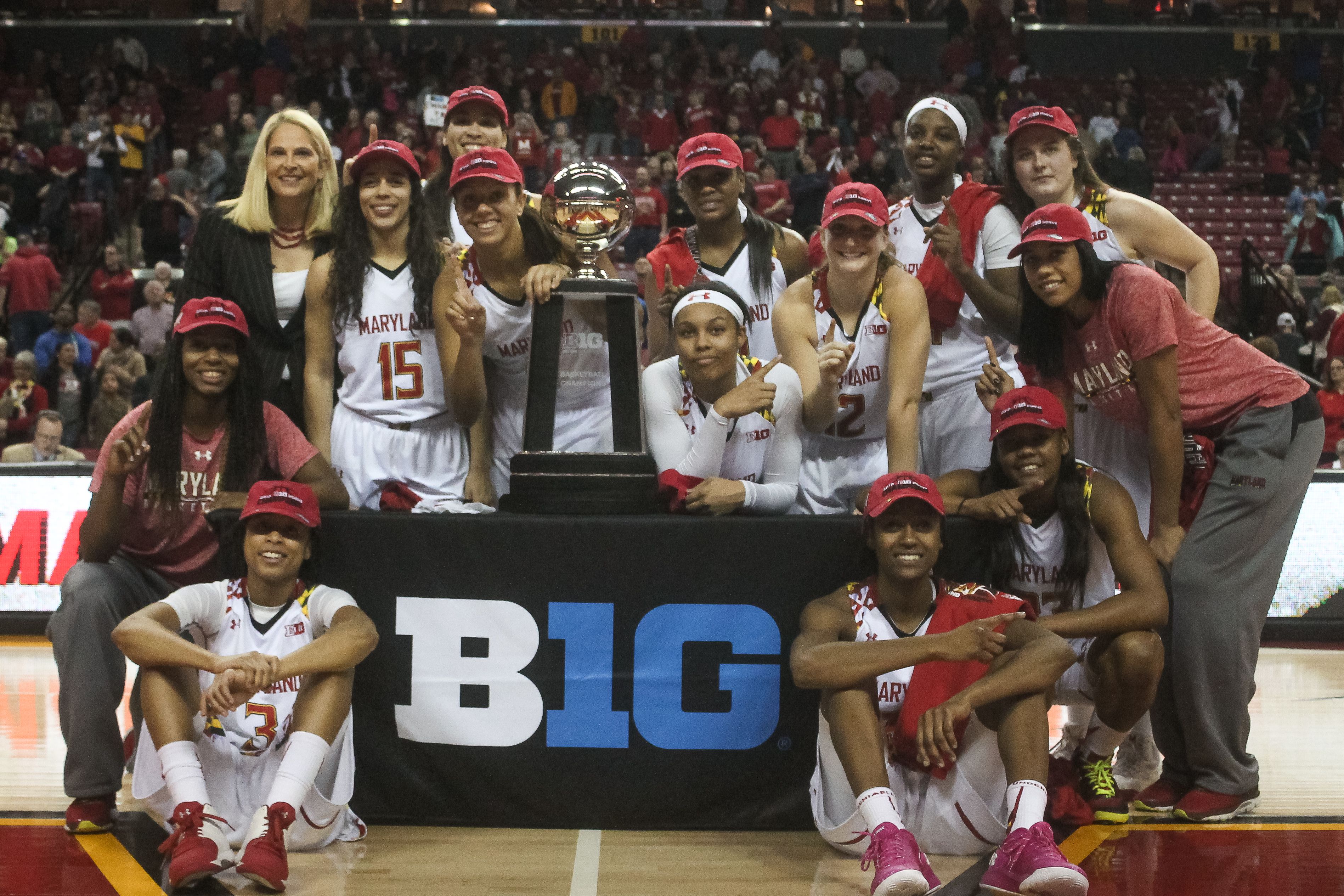Views expressed in opinion columns are the author’s own.
University of Maryland basketball coach Mark Turgeon is going all out to boost student attendance this season. From free pizza and T-shirts at open practice to handing out free donuts in front of McKeldin, it’s clear he’s felt the decline in student attendance over the past couple of years, and he’s not afraid to seem a little desperate to win them back. Since the school joined the Big Ten in 2014, the average game attendance has gone down from 17,863 in the 2015-2016 season to 14,675 in the 2017-2018 season. When compared with the women’s basketball team in the same time frame, however, the men’s lowest numbers nearly triple the average 5,537 fans coach Brenda Frese sees in the stands.
While Frese is equally honored alongside Turgeon with an ice cream flavor in the Maryland Dairy, she knows she can’t expect the same turnout at games. But why not? The Maryland women’s basketball team has had a more recent NCAA championship, winning the title in 2006, as well as more Elite Eight and Final Four appearances than the men’s team. Furthermore, their success has occurred in a much shorter time frame — the men’s basketball team is celebrating its 100th season this year, while the women’s team wasn’t recognized as a varsity sport until 1971.
Of course, the gender disparity in sports is not exactly a newsworthy phenomenon. The issues that plague this university’s women’s basketball players follow them to their professional organizations. The disparities often worsen, as they are no longer subject to the protection of Title IX — the federal law that prohibits sex-based discrimination in any federally funded education programs. Minnesota’s WNBA team, the Lynx, were pushed out of their home court during the playoffs of summer 2017, to make room for renovations to accommodate the state’s NHL team, the Wild, who were not even in active play. At the time, the Minnesota Lynx was the state’s most successful professional team, but that didn’t stop them from being relegated to a college facility.
Like in many industries, WNBA players make proportionately less than their male counterparts. While the WNBA’s revenue is overall lower due to a smaller audience (though like the late formation of Maryland’s women’s team, the WNBA is 51 years younger than the NBA), WNBA players’ paychecks constitute less than 25 percent of the league’s revenue, while NBA players are paid with 50 percent of league revenue. Despite the WNBA’s growing audience, the wage gap between them and their male counterparts has grown as well. A contributor to Forbes estimated that the percentage of revenue paid to WNBA players decreased from 33 percent to 22.8 percent from 2015 to 2017.
On Nov. 1, the WNBA Players Association announced it will opt out of its current collective bargaining agreement. The decision followed the NBA G-League’s announcement that it would offer a select number of $125,000 contracts to promising high school graduates, a sum that exceeds the maximum WNBA salary by $10,000. The opt out will not come into effect until the 2020 season, and it remains to be seen how effective the negotiations will be in bringing WNBA players closer to pay equity.
In the meantime, give women’s basketball a shot, whether it’s in the Xfinity Center cheering on our Maryland women, or going to Capital One Arena to see the Washington Mystics, who nearly won the championship last year. It’s true that women’s basketball is a different game from how the men play, but that’s not a bad thing. Once you’ve seen one tall guy dunk a basketball, you’ve kind of seen them all. The belief that women’s basketball is boring is just plain false. Anyone who saw former Maryland player Destiny Slocum’s 65-foot buzzer-beater shot in the second round of the 2017 NCAA tournament against West Virginia knows better. If history is any indication, putting your time and energy in the Maryland women’s basketball team will be a stronger investment.
Emily Maurer is a junior environmental policy major. She can be reached at emrosma@gmail.com.



